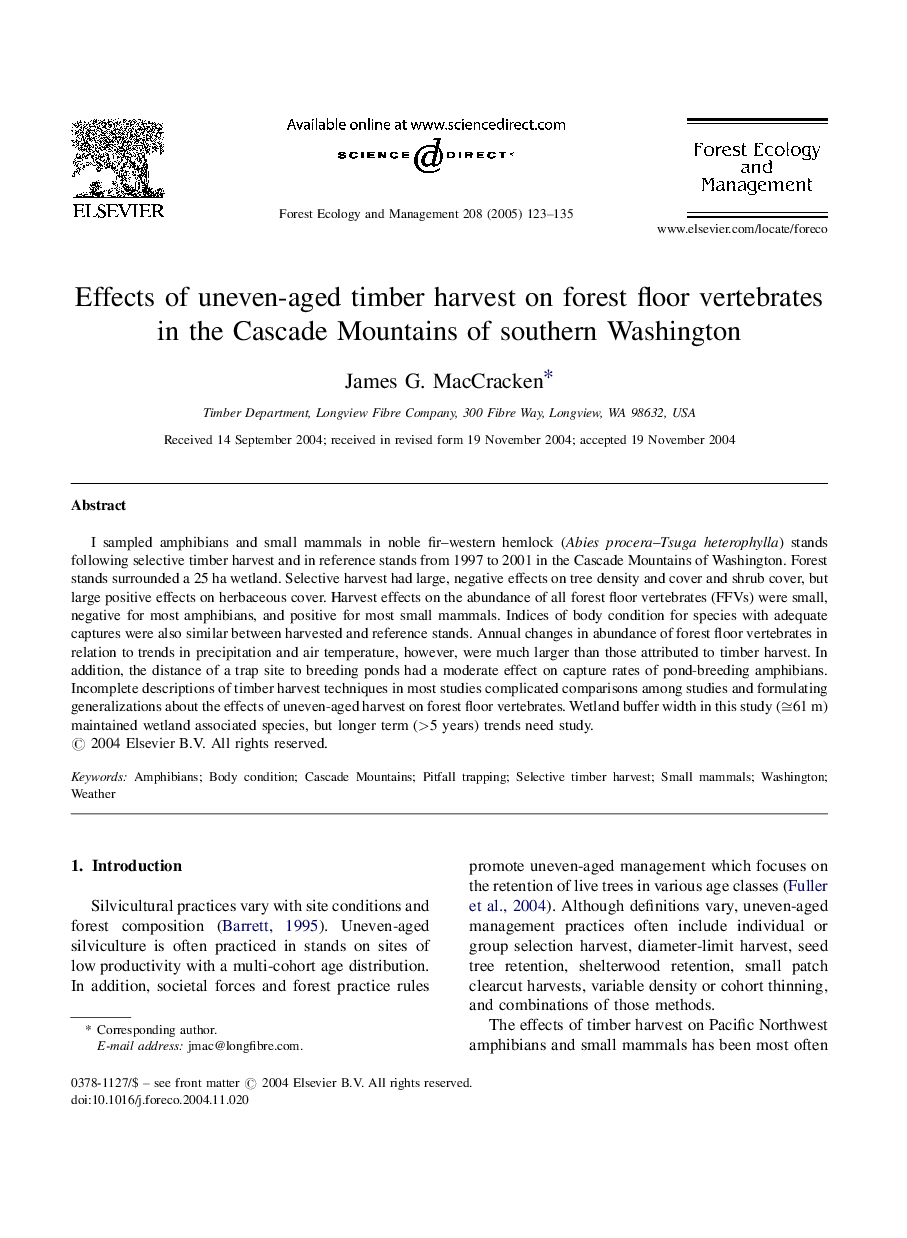| Article ID | Journal | Published Year | Pages | File Type |
|---|---|---|---|---|
| 9620413 | Forest Ecology and Management | 2005 | 13 Pages |
Abstract
I sampled amphibians and small mammals in noble fir-western hemlock (Abies procera-Tsuga heterophylla) stands following selective timber harvest and in reference stands from 1997 to 2001 in the Cascade Mountains of Washington. Forest stands surrounded a 25Â ha wetland. Selective harvest had large, negative effects on tree density and cover and shrub cover, but large positive effects on herbaceous cover. Harvest effects on the abundance of all forest floor vertebrates (FFVs) were small, negative for most amphibians, and positive for most small mammals. Indices of body condition for species with adequate captures were also similar between harvested and reference stands. Annual changes in abundance of forest floor vertebrates in relation to trends in precipitation and air temperature, however, were much larger than those attributed to timber harvest. In addition, the distance of a trap site to breeding ponds had a moderate effect on capture rates of pond-breeding amphibians. Incomplete descriptions of timber harvest techniques in most studies complicated comparisons among studies and formulating generalizations about the effects of uneven-aged harvest on forest floor vertebrates. Wetland buffer width in this study (â
61Â m) maintained wetland associated species, but longer term (>5 years) trends need study.
Related Topics
Life Sciences
Agricultural and Biological Sciences
Ecology, Evolution, Behavior and Systematics
Authors
James G. MacCracken,
